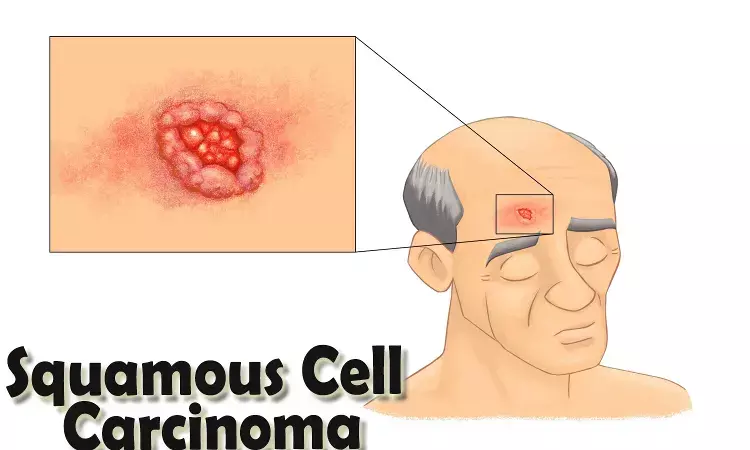- Home
- Medical news & Guidelines
- Anesthesiology
- Cardiology and CTVS
- Critical Care
- Dentistry
- Dermatology
- Diabetes and Endocrinology
- ENT
- Gastroenterology
- Medicine
- Nephrology
- Neurology
- Obstretics-Gynaecology
- Oncology
- Ophthalmology
- Orthopaedics
- Pediatrics-Neonatology
- Psychiatry
- Pulmonology
- Radiology
- Surgery
- Urology
- Laboratory Medicine
- Diet
- Nursing
- Paramedical
- Physiotherapy
- Health news
- Fact Check
- Bone Health Fact Check
- Brain Health Fact Check
- Cancer Related Fact Check
- Child Care Fact Check
- Dental and oral health fact check
- Diabetes and metabolic health fact check
- Diet and Nutrition Fact Check
- Eye and ENT Care Fact Check
- Fitness fact check
- Gut health fact check
- Heart health fact check
- Kidney health fact check
- Medical education fact check
- Men's health fact check
- Respiratory fact check
- Skin and hair care fact check
- Vaccine and Immunization fact check
- Women's health fact check
- AYUSH
- State News
- Andaman and Nicobar Islands
- Andhra Pradesh
- Arunachal Pradesh
- Assam
- Bihar
- Chandigarh
- Chattisgarh
- Dadra and Nagar Haveli
- Daman and Diu
- Delhi
- Goa
- Gujarat
- Haryana
- Himachal Pradesh
- Jammu & Kashmir
- Jharkhand
- Karnataka
- Kerala
- Ladakh
- Lakshadweep
- Madhya Pradesh
- Maharashtra
- Manipur
- Meghalaya
- Mizoram
- Nagaland
- Odisha
- Puducherry
- Punjab
- Rajasthan
- Sikkim
- Tamil Nadu
- Telangana
- Tripura
- Uttar Pradesh
- Uttrakhand
- West Bengal
- Medical Education
- Industry
Patients with Head and Neck squamous cell carcinoma at significant risk of CV events

A new study on Head and Neck squamous cell carcinoma (HNSCC) revealed that suboptimally managed cardiovascular risk factors, the risk of stroke and myocardial infarction, represent a significant burden in HNSCC leading to an increased risk of death. The study was published in the journal JAMA Otolaryngology-Head & Neck Surgery.
Due to similar risk factors and exposure to potentially cardiotoxic cancer therapies, cardiovascular (CV) illness is a significant cause of morbidity and mortality among cancer patients. As there is much less information on the CV risk factors that influence those with head and neck squamous cell carcinoma (HNSCC), researchers conducted a retrospective, population-based cohort study to define CV risk profiles, incident stroke, myocardial infarction (MI), and mortality in patients with HNSCC between January 1, 2000, to December 31, 2020.
Nearly 35,897 US veterans with newly diagnosed HNSCC were included to study their Demographic, cancer-specific, and treatment characteristics. The median [IQR] age of the participants is 63 [58-69] years. Among the participants, there were 176 [0.5%] American Indian or Alaska Native, 57 [0.2%] Asian, 5321 [16.6%] Black, 207 [0.6%] Native Hawaiian or Other Pacific Islander, and 26 277 [82.0%] White individuals. There were high rates of former or current smoking (16 341 [83%]), hypertension (24 023 [67%]), diabetes (7988 [22%]), and hyperlipidemia (18 421 [51%]). The primary outcome of measurement included the prevalence of CV risk factors, medication use, and control at HNSCC diagnosis; cumulative incidence of stroke and MI; and all-cause death.
Key findings:
- Although most patients were under risk-lowering medications, at least 1 uncontrolled CV risk factor was seen in 15,941 (47%) patients.
- Among the races of participants, the black race was associated with an increased risk of having uncontrolled CV risk factor(s).
- Among various Head and neck cancers, laryngeal cancer had higher rates of prevalent and uncontrolled risk factors compared with other cancer subsites.
- Considering death as a competing risk, the 10-year cumulative incidence of stroke and MI was 12.5% and 8.3%, respectively.
- In cause-specific hazard models, hypertension, diabetes, carotid artery stenosis, coronary artery disease, and the presence of uncontrolled CV risk factor(s) were significantly associated with stroke and MI.
- Incident stroke and MI were associated with a 47% and 71% increased risk of all-cause death, respectively as per the extended Cox models.
Thus, modifiable CV risk factors are associated with the risk of adverse CV events, and these events are associated with a higher risk of death in patients with HNSCC.
Further reading: Sun L, Brody R, Candelieri D, et al. Risk of Cardiovascular Events Among Patients With Head and Neck Cancer. JAMA Otolaryngol Head Neck Surg. Published online June 22, 2023. doi:10.1001/jamaoto.2023.1342
BDS, MDS
Dr.Niharika Harsha B (BDS,MDS) completed her BDS from Govt Dental College, Hyderabad and MDS from Dr.NTR University of health sciences(Now Kaloji Rao University). She has 4 years of private dental practice and worked for 2 years as Consultant Oral Radiologist at a Dental Imaging Centre in Hyderabad. She worked as Research Assistant and scientific writer in the development of Oral Anti cancer screening device with her seniors. She has a deep intriguing wish in writing highly engaging, captivating and informative medical content for a wider audience. She can be contacted at editorial@medicaldialogues.in.
Dr Kamal Kant Kohli-MBBS, DTCD- a chest specialist with more than 30 years of practice and a flair for writing clinical articles, Dr Kamal Kant Kohli joined Medical Dialogues as a Chief Editor of Medical News. Besides writing articles, as an editor, he proofreads and verifies all the medical content published on Medical Dialogues including those coming from journals, studies,medical conferences,guidelines etc. Email: drkohli@medicaldialogues.in. Contact no. 011-43720751



